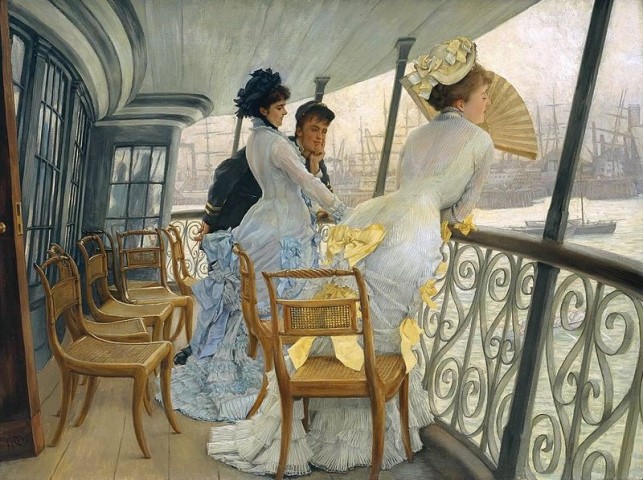Women and men travelling in a 1913 Napier motor car. Photo from the State Library of Queensland.
Travel advice is something we’re all used to. Every magazine, travel website, and newspaper frequently has tips on the best ways to travel with children, pack your luggage, avoid excess fees, or anything else associated with travel. Expert and amateur travellers, and even stay-at-homes, have some advice they want to share when it comes to travel, and often the advice completely conflicts with something else you’ve heard!
Of course, in the age of travel blogs and frequent travel, we can easily find travel advice. But before travel became so common, how did people get travel advice – and what did it look like?
Apparently, etiquette and travel guide books were considered the most reputable advisors, with some advising what sounds like common advice for the modern traveller, while other suggestions having thankfully fallen “along the wayside.”
Here’s some vintage travel advice from the days of yore:
Bizarre travel advice isn’t anything new.
While most modern travellers complain about a lack of places to wash when on the road or in airports, in the 1800s travellers were advised not to wash too frequently!
According to Sir Frances Galton, a famed explorer who wrote A Guide to Rough Travel in the1850s, natural sweat and dust caked onto the body while travelling was hugely protective to the skin, and bathing was to be avoided.
This wasn’t Galton’s only suggestion that modern travellers would find ridiculous. He also had a unique idea for emergency funds during travel, suggesting that individuals purchase small gemstones to insert under the skin of their forearms, as emergency currency in case of robbery!
Packing light vs. packing for everything has always been up for debate.
While most of us try to pack as lightly as possible, we probably think that keeping just to “carry-on” is a modern idea, but it’s actually been advised since the late 1800s.
Women travellers at that time were encouraged to keep to a minimal amount of luggage – a small steamer trunk, a suitcase for dirty clothes, and a carpet bag as a “carry-on” were considered all a “sensible” traveller needed. For even shorter trips, only a carpet bag or satchel was recommended, in which women should carry one change of linen (basically, undergarments and a clean shirt), personal care items, a book, and a sandwich in case food was not available while in transit. This was taken to heart by female travellers like Nellie Bly, a journalist who went around the world in 1889 with just one bag and dress suit.

Tissot’s painting of travelers on the HMS Calcutta in approximately 1878. Photo from Wikipedia Commons.
Similarly, etiquette books of the early 1900s advocated restraint in dressing while travelling, with etiquette queen Emily Post considering it the worst of taste to wear your ball gown aboard a steamer boat in the 1920s.
It wasn’t until the‘Golden Age of Travel that vast amounts of dressing up were advocated while on the road or, more specifically, the airplane. Women were encouraged to dress to the nines to take flights in the days when all seats were first class – and to take plenty of luggage with them. A 1950s fashion guide book (The Art of Being a Well-Dressed Wife) advocated that
…weight restrictions are for free transportation. If you’re willing to pay for the extra poundage, you can take as much as you like. The added cost should be regarded as a legitimate travel expense, not something to be avoided at all costs. Magical places lose their magic if you know you’re not dressed as well as you might be because of the weight limit.
A lady should always be on her best behavior.
Of course, travel advice in the past didn’t just pertain to packing and actions, it also pertained to morals and behaviour.
A woman travelling in the past was always supposed to be on her best behaviour, never fidgeting during long trips or complaining about delays and, most importantly, never striking up conversation with strangers, especially male strangers.
In this regard, a lot has changed in the last century. Women travellers are free to act as their personalities dictate, although many guides still suggest women exercise caution while abroad – although it’s now for safety reasons, versus to protect your reputation!
